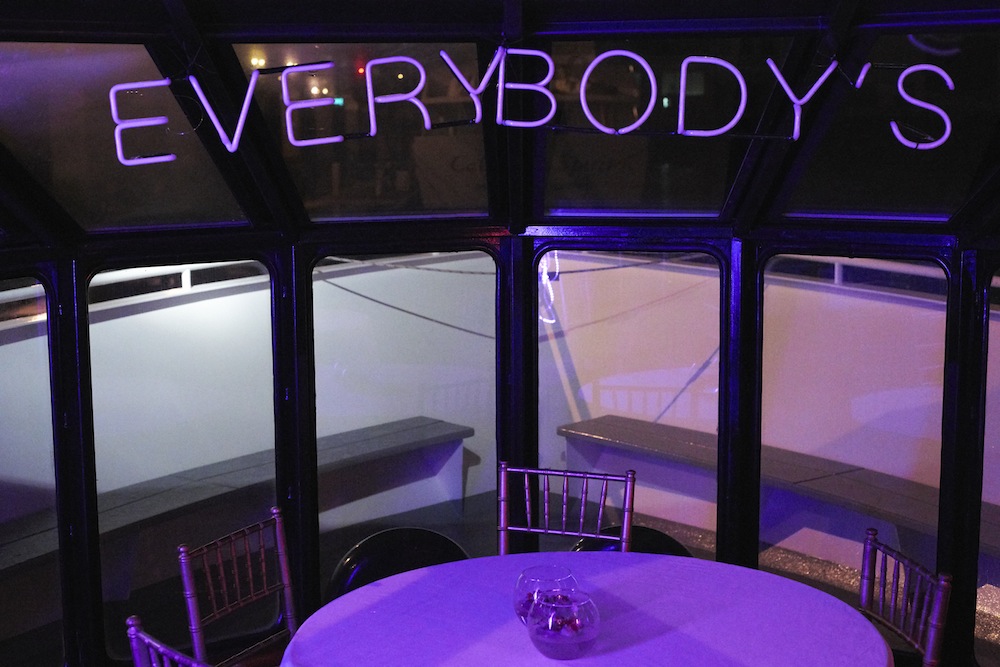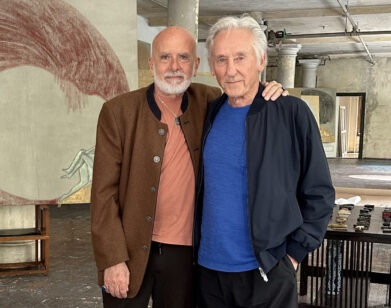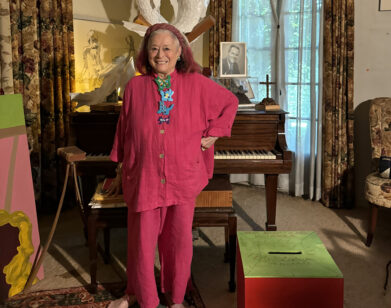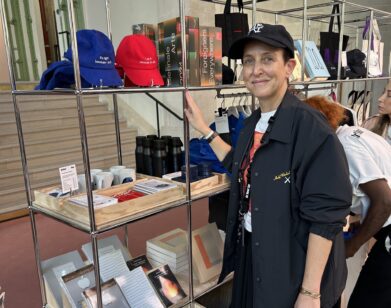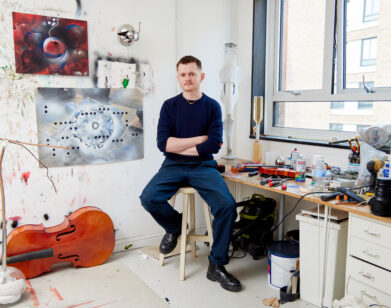All Aboard
PHOTOS COURTESY OF ROBERT DIVERS HERRICK.
Tonight at San Francisco Bay’s Pier 40, artist Constance Hockaday will commandeer a yacht in the name of art and awareness. The effort, titled Attention! We’ve Moved, is a participatory floating soundscape—taking place through the weekend as part of the inaugural UNTITLED, San Francisco art fair—and sees the 34-year old take aim at an issue roiling the city: the displacement of artists and musicians. As her boat laps the bay, queer musicians and artists who once called the Bay Area home will perform, recalling the importance that art plays in the cultural life of a city, the area’s history of experimental art practice, as well as the artists whose lives were lost in the fire at Oakland’s Ghost Ship warehouse (an artist and performance space) just last month.
“My larger practice is about getting people on the water. It’s about using the water as a reflective, participatory space,” explains Hockaday, who constructed Boggsville Boatel, a meditative boat hotel in New York’s Far Rockaways, in 2011. “I’m always like, ‘I want to get all the freaks together and try something impossible in a space that is so tight, in a time where we are being culturally pinched, just to feel some movement, to feel a sense of possibility, even if it’s momentary.'”
Before Hockaday sets sail, Interview took a ride with the artist along the San Francisco Bay to discuss her performance and the public’s right to access America’s waterways.
ANTWAUN SARGENT: What inspired Attention! We’ve Moved?
CONSTANCE HOCKADAY: I’ve been doing stuff like this for a while. This is the first time I chartered a yacht. Mostly I take old boats and put them back together. This project still has the same spirit as the other projects because it gets two different kinds of people together in a really tiny space. When Untitled asked The Lab to be a part of the fair, Dena [Beard], was like, “I want to do something that speaks to the fact that Pier 70, the building where the fair is happening, used to be a place where wild art happened.” It was a place of experimental music, performance, and chaotic spectacle. Dena wanted to find a way to honor that and she knew I had done projects about displacement in the past on boats.
SARGENT: How does this project call attention to displacement?
HOVKADAY: Well, Dena said, “Let’s do something,” and I said, “Let’s do a noise club,” because the Bay Area has some really spectacular electronic and experimental musicians, and a lot of people have been displaced. We made a long list and we thought of some of our favorites—some of them had already moved away, but we decided to bring them all back and recreate that same kind of wild, messy, noisy, thoughtful spirit with a real queer and feminist edge to it. Another thing that’s happened in the city is there was a noise ordinance put in place that totally shut down a lot of noise performance. So we said, “Let’s just take them onto the water.” This all happened before the Oakland fire.
SARGENT: Has the fire informed your project at all?
HOCKADAY: It totally stopped me in my tracks. It has been an enormously devastating time here. Almost all the musicians that we booked for the show have lost somebody or are coming back to Oakland for the first time after losing some of their best friends or friends’ children. I think a lot of what’s going to happen is a number of them are going to be playing tribute shows. I don’t know—[the fire] just made it all so much more palpable, raw, and even more urgent than it already was.
SARGENT: How have the Floating Neutrinos influenced your water-based art practice?
HOCKADAY: When I was in my late teenage years, I met the family of raft people and I also grew up on the water—my dad is a marine biologist. The Neutrinos taught me how to build boats, maneuver the politics of the waterfront legally, and they really built my confidence up. They had some really deep philosophies. One of them was the most important thing that a modern person needs to be able to know is how to articulate their own desire. There are a lot of social structures that inhibit us from being able to be super grounded and present with what we truly desire. They started using boats and rafts as a way to get out from under of the social structures, like the boss, the landlord, and relationships that keep us locked in.
The water is a tool for spiritual and interpersonal reflection and socio-political reflection, and a real challenge on a number of fronts. Under the public trust doctrine and common law, the water and the sky are property of everybody and the access to those places are too. As I’ve grown with these ideas a lot of it becomes about that access point, because all of that right over there can be totally free public space.
SARGENT: Is this the bay over here?
HOCKADAY: Yes, the San Francisco Bay. If you don’t know how to get to it, it’s almost absolutely impossible to have an imagination around it. I could do a spectacle on the water and say, “Look! Public space.” But for me it’s about showing people a route down to where the water is and helping them make that leap where you step off the land and get on to the water.
SARGENT: Why is that your mission?
HOCKADAY: I’m finding that in urban areas, urban infrastructure informs what we can and can’t do with our bodies. In the same ways noise clubs or industrial wilderness existed in the city as spaces [where] we took risks, the water can be that place now. Taking risks is a practice. When people are in this sound bath on the yacht and they are looking back on the city, I hope that people will contemplate what they want for our cities, and how can we plan for art and culture to be relevant and important.
ATTENTION! WE’VE MOVED CONTINUES THROUGH JANUARY 15, 2017 AT UNTITLED, SAN FRANCISCO.

